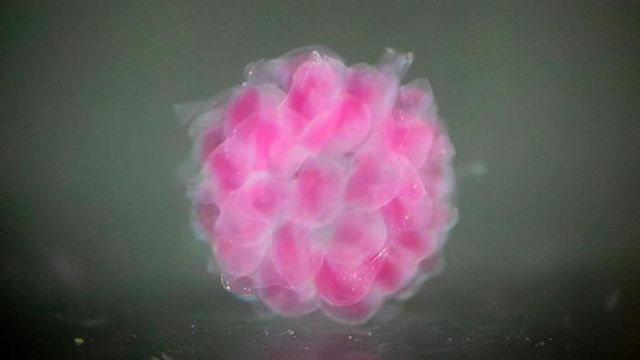Register for free to listen to this article
Thank you! Listen to this article using the player above.
A research team at the University of Virginia School of Engineering and Applied Science has developed what may be the first building block template for human-compatible organs that can be printed on demand.
Liheng Cai, assistant professor of materials science and engineering and chemical engineering, and doctoral student Jinchang Zhu created biomaterials with controlled mechanical properties that match a variety of human tissues.
“This is a big leap compared to existing bioprinting technologies,” Chu said.
Want more breaking news?
Subscribe to Technology Networks’ daily newsletter to get the latest science news delivered straight to your inbox every day.
Subscribe for free
They published their findings Saturday in the journal Nature Communications.
Their unique bioprinting method is called digital assembly of spherical particles. DASP technique deposits particles of biomaterial into a water-based support matrix, building 3D structures that provide the right environment for cell growth. The assembly process is how “voxels”, a 3D version of pixels, build 3D objects.
“Our new hydrogel particles are the first functional voxels we have ever made,” says Chu. “With precise control over their mechanical properties, these voxels could serve as one of the fundamental building blocks for future printed structures.”
“For example, with this level of control we can print organoids, 3D cell-based models that function as human tissues to study disease progression in the search for treatments.”
Durable and cell-friendly
The particles are polymer hydrogels designed to mimic human tissue by fine-tuning the arrangement and chemical bonds of single-molecule monomers, which then link together in chains to form networks.
Encapsulated within the particles are actual human cells.
Compared with other hydrogel bioinks, Cai and Zhu’s is less toxic and more biocompatible with cells, they say. Their “double-network” hydrogel, formed from two intertwined molecular networks, is mechanically strong yet highly tunable to mimic the physical properties of human tissue.
Cai and Zhu first published about their DASP technology in the journal Advanced Functional Materials in 2021. Their work proved the concept of using voxels of biomaterial as building blocks and, through laboratory experiments, demonstrated a DASP-printed material that functions like a pancreas with glucose-stimulated insulin release.
However, DASP 1.0 was only able to print brittle hydrogels with limited tunability. In their latest paper in Nature Communications, Cai and Zhu present DASP 2.0, which introduces double-network hydrogel bioinks formed using “click chemistry,” a process that rapidly crosslinks or bonds molecular structures.
The right printer for the job
What made this advance possible were improvements to the team’s bioprinter: They designed a multichannel nozzle to mix the hydrogel’s components on demand. Pre-mixing is not possible because cross-linking happens so quickly, transforming the material from droplets into an elastic, water-swollen gel in under 60 seconds.
In previous work, the team determined that droplet formation and rapid detachment from the nozzle was essential to mimic the mechanical properties, such as elasticity and stiffness, of the target human tissue.
DASP achieves this by ejecting large droplets from a narrow, fast-moving nozzle into the matrix, where they become instantly suspended.
“Precise manipulation of viscoelastic voxels represents a fundamental and technical challenge in soft matter science and 3D bioprinting,” said Tsai upon publishing his second paper on DASP in 2022.
“We’ve now laid the foundation for voxelized bioprinting,” he said. “Once fully realized, applications of DASP will include artificial organ transplants, disease and tissue modeling, and screening of potential new drugs — and probably not only that.”
Reference: Zhu J, He Y, Wang Y, Cai LH. Voxelized bioprinting of modular double-network bioink droplets. Nat Commun. 2024;15(1):5902. doi: 10.1038/s41467-024-49705-z
This article has been republished from the following source. Note: Sources may have been edited for length and content. Please contact the source for more information. Our press release publication policy can be found here.


